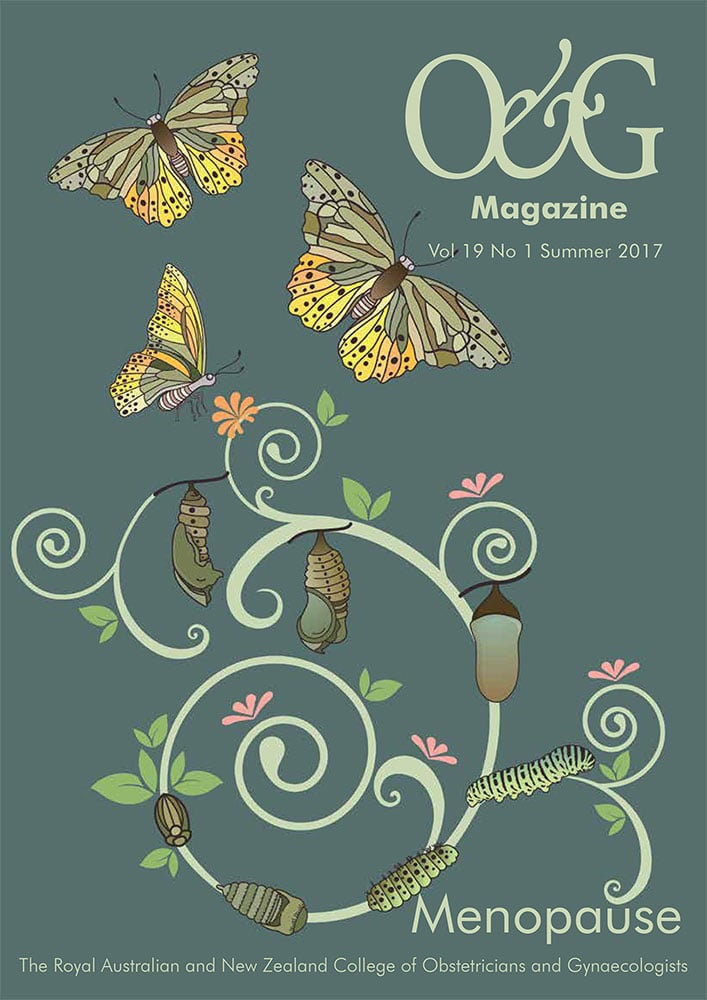Hormone replacement therapy (HRT) was first introduced in the 1940s. Use became widespread in the 1960s, fostered by the erroneous concept that the menopause was a hormone deficiency disorder and that replacement would make women ‘feminine forever’.
Popularity increased in 1988, after the US Food and Drug Administration (FDA) approved HRT for the treatment of osteoporosis. Increasing use was accompanied by a number of observational cohort studies and by the 1990s these studies had consistently shown that HRT reduced the incidence not only of osteoporosis but also cardiovascular disease (CVD). All-cause mortality was also reduced. There was little doubt about the benefits of HRT and hormonal management of the menopause became accepted practice.
There were reports of an increased risk of breast cancer with long-term use, but these were of borderline significance. Similarly, risk of stroke was increased in some, but not all, studies. As the incidence of stroke and breast cancer were quite small compared to cardiovascular disease, it was felt that the reduction in CVD risk was the major contributor to the 20–40 per cent reduction in all-cause mortality seen across observational studies. Oestrogen was said to be cardio protective, although its benefits were somewhat attenuated by the addition of synthetic progestins. The FDA held an enquiry to decide whether or not to approve oestrogen for cardio protection, but decided randomised controlled trial (RCT) data were required. The scene was set for the Women’s Health Initiative (WHI).
Details of the WHI trial are well known. After just over five years, the oestrogen and progestin (E&P) arm was stopped due to evidence of harm. The main message was increased risk of breast cancer and cardiovascular disease, that HRT did more harm than good and that the effects were seen in all women of all ethnicities and all ages. Mayhem ensued. Two years later came the results from the conjugated equine oestrogens (CEE)-only arm of the trial. Neither breast cancer nor heart disease was increased, but there was an increased risk of ischaemic stroke. In 2006, data from the CEE-only arm was released in age cohorts. These showed cardiovascular benefit for women in their 50s. Results were neutral for women in their 60s and harm occurred with initiation in the 70s. Long-term follow up showed a reduction in breast cancer risk for oestrogen-only users. Pooled data from the two arms of the trial also showed that for women aged 50–59 all-cause mortality was reduced by 30 per cent, similar to that seen in observational studies. When long-term follow-up data were released in 2013, there was no increased risk of CVD in any age group, but the benefit appeared greater in the CEE-only arm. It was apparent that the harms suggested at the initial WHI press release had been exaggerated. We had come full circle.
Meanwhile, observational studies in France and the UK were reporting different results for combined HRT using different progestogens. Whereas medroxyprogesterone acetate (MPA) attenuated the cardiovascular benefits of oestrogen, the same was not true for combinations of oestrogen with micronised progesterone or dydrogesterone. These two progestogens also appeared safer for the breast than synthetic progestins.
Key points
- MHT is the most effective treatment for menopausal vasomotor symptoms and is safest in recently menopausal women.
- Appropriate screening should occur prior to initiating MHT.
- The lowest effective dose consistent with treatment goals should be used.
- Oestrogen-only therapy is appropriate in women following hysterectomy.
- In perimenopausal women with a uterus, sequential combined therapy of oestrogen plus a progestogen for 12–14 days per month is preferred.
- In postmenopausal women with a uterus, therapy may be sequential or continuous oestrogen plus continuous progestogen.
- Transdermal therapy may reduce VTE risk compared to oral therapy.
- Different progestogens may exert different effects on breast and cardiovascular health.
- There is no mandatory cessation time.
- There is lack of evidence to support the use of MHT in breast cancer survivors.
- Avoid compounded non-TGA-approved preparations.
Using MHT
- In women aged <60 years or within 10 years of their last menstrual period (LMP) and without contraindications, MHT is a safe, therapeutic option for treatment of VMS with ancillary bone and cardiovascular benefits.
- Contraindications to MHT use include undiagnosed vaginal bleeding, oestrogen-dependent cancer, severe active liver disease, high risk of VTE or breast cancer, untreated hypertension and personal choice.
- MHT should not be recommended without a clear indication for its use.
- The option to use MHT is an individual decision and should be considered in terms of quality of life, health priorities and personal risk factors such as age, time since LMP and the risk of VTE, stroke, ischaemic heart disease and breast cancer.
- Consideration of MHT for symptom relief or osteoporosis prevention should be part of an overall strategy including recommendations regarding diet, exercise, smoking cessation, safe levels of alcohol consumption and weight control.
- The type and route of administration of MHT should be consistent with treatment goals and patient preference. The minimum effective dose should be used and treatment should be individualised and reviewed at least annually.
- Duration of treatment should be consistent with treatment goals and there is no mandatory cessation time.
- Oestrogen-only therapy is appropriate for women after a hysterectomy, but a progestogen is required in the presence of a uterus with the exception that CE may be combined with bazedoxifene in a fixed-dose regimen.
- For women with a uterus and within 12 months of their LMP a combination of continuous oestrogen plus a progestogen for 12–14 days per month is usually preferred.
- Benefit-to-risk ratio appears to be greatest when a transdermal oestrogen is combined with micronised progesterone or dydrogesterone, but this may not suit all women and treatment must be individualised.
- For women with a uterus that are more than 12 months from their LMP, the above sequential regimens may be continued or converted to continuous combined oestrogen plus progestogen therapy.
- The use of testosterone therapy, alone or with MHT, is supported in carefully selected postmenopausal women with sexual interest or arousal disorders.
- The use of custom compounded MHT is not recommended because of lack of regulation, safety and efficacy testing, batch standardisation and purity measures.
- Current safety data do not support the use of MHT in breast cancer survivors.
- In certain women for whom non-hormonal and complementary measures have been unsuccessful in alleviating severe symptoms, discussion regarding hormonal options may be appropriate and should involve the woman, her oncologist, breast surgeon and GP together with treating doctor.
- In women with premature ovarian insufficiency and without contraindications, MHT should be continued at least until the average age of the menopause.
Into the 21st century
HRT is now commonly called menopause hormone therapy (MHT); the inference being that it should be used to treat a complaint rather than merely to replace a hormone.
Recently, new guidelines or recommendations on the use of MHT have been published by the National Institute for Health and Care Excellence (NICE) in the UK, the US Endocrine Society and the International Menopause Society. All three are in broad agreement regarding the real risks and benefits of MHT and support its use in appropriate, recently postmenopausal women. A Revised Global Consensus Statement on MHT use has also been published, which summarises the key points around MHT use.
Indications
MHT, including tibolone and the combination of conjugated oestrogens and bazedoxifene (CE/BZE), is the most effective treatment for vasomotor symptoms (VMS) associated with menopause at any age, but benefits are more likely to outweigh risks when initiated before the age of 60, or within 10 years of the last period.
If MHT is contraindicated, or not desired for the treatment of bothersome VMS, selective serotonin reuptake inhibitors (SSRI) and serotonin and noradrenalin reuptake inhibitors (SNRI), such as paroxetine, escitalopram, venlafaxine and desvenlafaxine, have been shown to be effective in RCTs. Gabapentin may also be considered. Quality of life, joint and muscle pain, mood changes and sleep disturbances may also improve during MHT treatment.
MHT is effective in the treatment of vulvovaginal atrophy. Local low-dose therapy is preferred for women whose symptoms are confined to the lower genital tract. In these women, there is no need for added progestogen.
Other benefits
MHT, including tibolone and CE/BZE, is effective in preventing bone loss in postmenopausal women and significantly reducing osteoporotic fractures at hip, vertebral and other sites.
MHT may be initiated in postmenopausal women at risk of osteoporosis or fracture before age 60 or within 10 years of last menstrual period (LMP). Initiation after age 60 requires individually calculated benefit-to-risk ratio, compared with other approved drugs.
RCTs, observational data and meta-analysis provide evidence that oestrogen-only MHT may decrease the risk of myocardial infarction and all-cause mortality when initiated in women younger than age 60 or within 10 years of LMP.
Data for E&P MHT shows a similar trend, but is less robust. Observational studies suggest some synthetic progestins, but not micronised progesterone, may attenuate the cardiovascular benefits of oestrogen.
MHT initiated in early menopause has no substantial effect on cognition but, based on observational studies, may prevent Alzheimer’s disease in later life.
MHT may be beneficial in improving mood in perimenopausal and recently menopausal women, but antidepressant therapy remains first-line therapy for major depressive illness.
Adverse effects
Short-term side effects of oestrogen therapy are usually dose related and include bloating, fluid retention, breast tenderness and headache.
Oral MHT is associated with an increased risk of venous thromboembolism (VTE). This effect is highest in the first year of treatment and is dose related. Observational studies and a meta-analysis point to a lower risk of VTE, and possibly stroke, with transdermal therapy compared to oral therapy.
The risk of breast cancer in women over 50 years of age associated with MHT is complex. Decreased risk has been reported for oestrogen-only therapy in women who have had a hysterectomy both in RCTs (WHI) and observational studies. Conversely, RCT evidence (WHI) suggested a possible increased risk of breast cancer for women receiving oestrogen when combined with a progestogen. The increased risk seems to be primarily, but not exclusively, associated with the use of a progestin with oestrogen therapy and may be related to duration of use. The risk may vary with different progestins. The risk of breast cancer attributable to MHT is rare and equates to an incidence of less than one per 1000 women per year of use and appears to decrease after treatment is stopped. This level of risk is similar to other common risk factors, including sedentary lifestyle, obesity, alcohol consumption, nulliparity, not breast feeding, early menarche and late menopause.
In RCTs, oral MHT administered to women aged 65 years or older may increase the risk of dementia and has no positive effect on cognition.
Further reading
Baber R and Wright J. A brief history of the International Menopause Society. Climacteric. doi.org/10.1080/13697137.2017.1270570.
Manson J. The Women’s Health Initiative Long term follow up. JAMA. 2013; 310:1353-1368.
NICE Guidelines. https://www.nice.org.uk/guidance.
Stuenkel C, et al. Treatment of symptoms of the menopause: An Endocrine Society Guideline. JCEM. 2015;100:3975-4011.
Baber R, et al. 2016 IMS Recommendations on midlife women’s health and MHT. Climacteric. 2016; 19:109-150.
DeVilliers T, et al. Revised Global Consensus Statement on MHT. Climacteric.
2016;19:313-315.
Jane FM and Davis SR. A Practitioner’s Toolkit for managing the menopause. Climacteric. 2014;17:1-16.






Leave a Reply